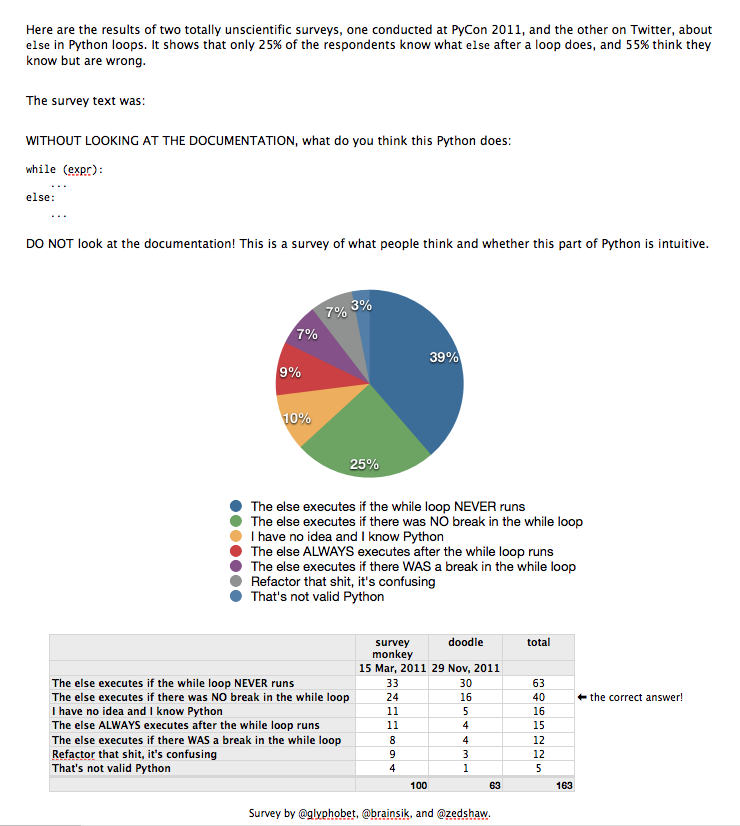Today I am announcing Fragments, a project I’ve been working on for a few months. It’s on GitHub and PyPI.
Fragments uses concepts from version control to replace many uses of templating languages. Instead of a templating language, it provides diff-based templating; instead of revision control, it provides “fragmentation control”.
Fragments enables a programmer to violate the DRY (Don’t Repeat Yourself) principle; it is a Multiple Source of Truth engine.
What is diff-based templating?
Generating HTML with templating languages is difficult because templating languages often have two semi-incompatible purposes. The first purpose is managing common HTML elements & structure: headers, sidebars, and footers; across multiple templates. This is sometimes called page “inheritance”. The second purpose is to perform idiosyncratic display logic on data coming from another source. When these two purposes can be separated, templates can be much simpler.
Fragments manages this first purpose, common HTML elements and structure, with diff and merge algorithms. The actual display logic is left to your application, or to a templating language whose templates are themselves managed by Fragments.
What is fragmentation control?
The machinery to manage common and different code fragments across multiple versions of a single file already exists in modern version control systems. Fragments adapts these tools to manage common and different versions of several different files.
Each file is in effect its own “branch”, and whenever you modify a file (“branch”) you can apply (“merge”) that change into whichever other files (“branches”) you choose. In this sense Fragments is a different kind of “source control”–rather than controlling versions/revisions over time, it controls fragments across many files that all exist simultaneously. Hence the term “fragmentation control”.
As I am a linguist, I have to point out that the distinction between Synchronic and Diachronic Linguistics gave me this idea in the first place.
How does it work?
The merge algorithm is a version of Precise Codeville Merge modified to support cherry-picking. Precise Codeville Merge was chosen because it supports accidental clean merges and convergence. That is, if two files are independently modified in the same way, they merge together cleanly. This makes adding new files easy; use Fragment’s fork command to create a new file based on other files (or just cp one of your files), change it as desired, and commit it. Subsequent changes to any un-modified, common sections, in that file or in its siblings, will be applicable across the rest of the repository.
Like version control, you run Fragments on the command line each time you make a change to your HTML, not before each page render.
What is it good for?
Fragments was designed with the task of simplifying large collections of HTML or HTML templates. It could replace simpler CMS-managed websites with pure static HTML. It could also handle several different translations of an HTML website, ensuring that the same HTML structure was wrapped around each translation of the content.
But Fragments is also not HTML specific. If it’s got newlines, Fragments can manage it. That means XML, CSS, JSON, YAML, or source code from any programming language where newlines are common (sorry, Perl). cFragments is even smart enough to know not to merge totally different files together. You could use it to manage a large set of configuration files for different servers and deployment configurations, for example. Or you could use it to manage bug fixes to that mess of duplicated source files on that legacy project you wish you didn’t have to maintain.
In short, Fragments can be used anyplace where you have thought to yourself “this group of files really is violating DRY”.
Use it
Fragments is released under the BSD License. You can read more about it and get the code on GitHub and PyPI. And you can find me on Twitter as @glyphobet.
Special thanks to Ross Cohen (@carnieross) for his thoughts on the idea, and for preparing Precise Codeville Merge for use in Fragments.


